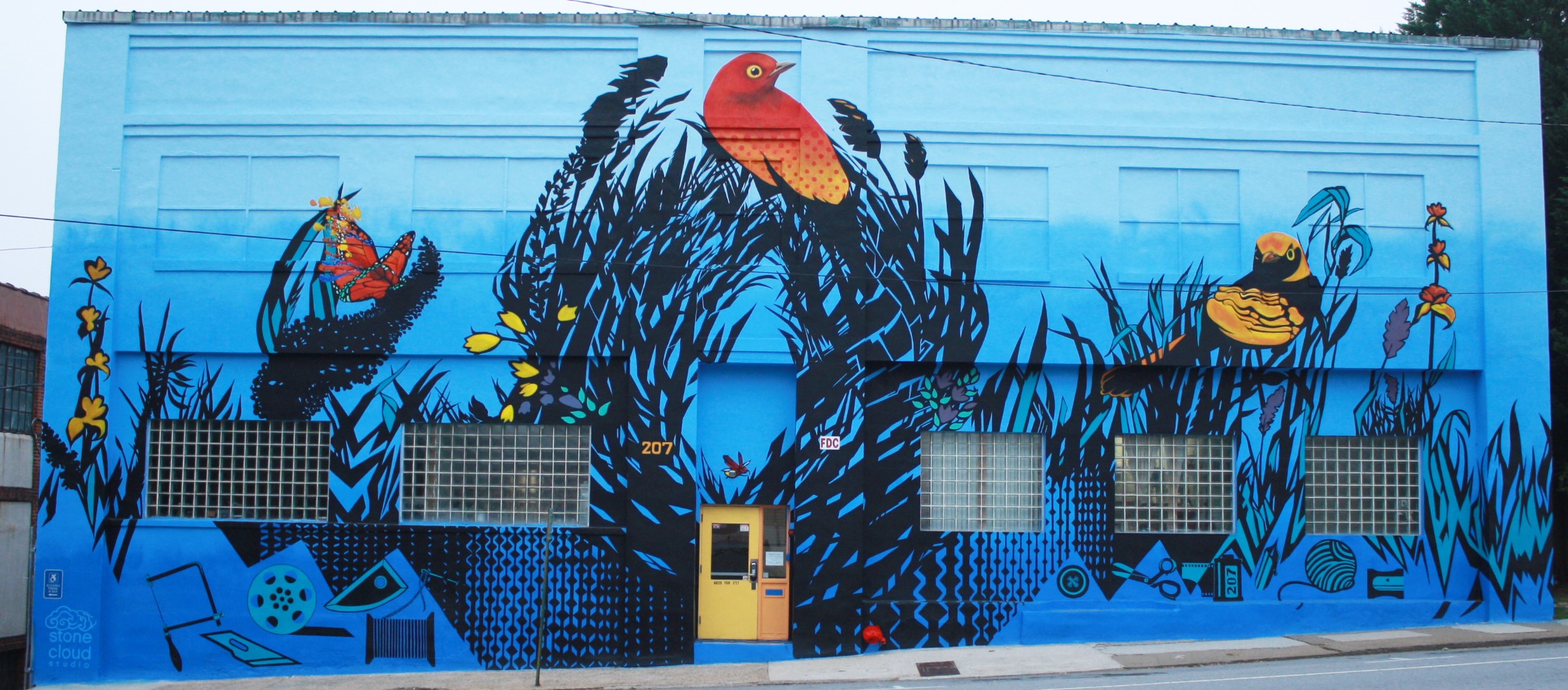Asheville's Arts Vibrancy

Guest post by Stefanie Gerber Darr, Asheville Area Arts Council
An artistic and bohemian spirit is palpable in Asheville. Walking down any street one can happen upon numerous buskers, artists selling their wares, galleries, studios, and small, grassroots creative businesses. The arts are the past, present, and future of our vibrant mountain city. Near the turn of the 20th century, arts and crafts were brought to the forefront of the economy for the economically disadvantaged through fireside industries developed by philanthropic women that included Frances Goodrich, who started Allanstand Cottage Industries, and Edith Vanderbilt, who began Biltmore Industries. The arts continued to flourish and prosper with the addition of dignitaries and celebrities that flocked to the area in the 1920’s and beyond for the therapeutic mountain air; the creation of Black Mountain College that challenged formal education through spontaneous and conceptual avenues in 1933 in the mountains just outside of the city; and the revitalization of the downtown and riverside areas in the 1990s by dedicated and talented citizens. Today, Asheville greets 10 million visitors each year to the eclectic, funky atmosphere only enhanced by the natural beauty of the area. Boasting over 200 studios and galleries in the River Arts District, nearly 30 galleries in the Downtown Art District, and an up and coming South Slope area that includes The Refinery Creator Space managed by the Asheville Arts Council, Tracey Morgan Gallery, Zapow, and Open Hearts Arts Center, the landscape is rife with a plethora of art forms, production facilities, individual studios, and art centers. Not only is there a rich arts and crafts scene, but music is everywhere - on the street in the form of buskers, at the array of music venues throughout the city, and the numerous festivals, such as LEAF, that offer auditory entertainment throughout the year. Theatrical and performing arts are alive and well also at NC Stage, Diana Wortham Theatre, Asheville Community Theatre, in addition to smaller venues and companies such as Asheville Contemporary Dance at the BeBe Theatre, The Magnetic Theatre, and Terpsicorps Theatre of Dance.
While the area has an enormous amount of arts and cultural organizations and individual artists, making a living here as a creative can often times be challenging with the high cost of living that is driven up by the attention our city sees by outsiders. An additional challenge is the lack of focus by elected officials regarding the importance of the arts to our economy. It is a well-known fact that much of the draw to Asheville is because of the arts and there is data to back this up. The 2016 Americans for the Arts Arts & Economic Prosperity Study V showed that just the non-profit arts bring in nearly $69 million dollars to the economy each year and $3.5 million dollars in tax revenue to Buncombe County. In order for the city and surrounding area to keep alive the qualities that make us unique, more attention needs to be offered to the arts that ensures they are at the heart of decision making in the future development of our area. There is progress being made in the recent collaboration of several organizations that will work together to develop and acquire a more robust set of data to illustrate the economic impact of the arts. Together, they will advocate for that which makes this city great, backed by the prevalent grassroots spirit of the community that will never be diminished. The future is bright, yet shaky…but hey, whose isn’t these days…am, I right?
###
Stefanie Gerber Darr is the executive director of the Asheville Area Arts Council (AAAC). Prior to her role at the AAAC, she was an independent museum consultant since moving to Asheville in 2014 and has worked with national craft organizations to manage traveling exhibitions and exhibition catalogs. She has also worked as the galleries and collection manager at Arrowmont School of Arts and Crafts, an educator for public programs at the Frist Center for the Visual Arts in Nashville, gallery manager at Herron School of Art and Design in Indianapolis, and as a performance artist in Humberto Duque’s Lightning Blues Express project at the Denver International Airport. She combines her training as a museum educator, curator, collections manager and maker to develop meaningful experiences for people with art.